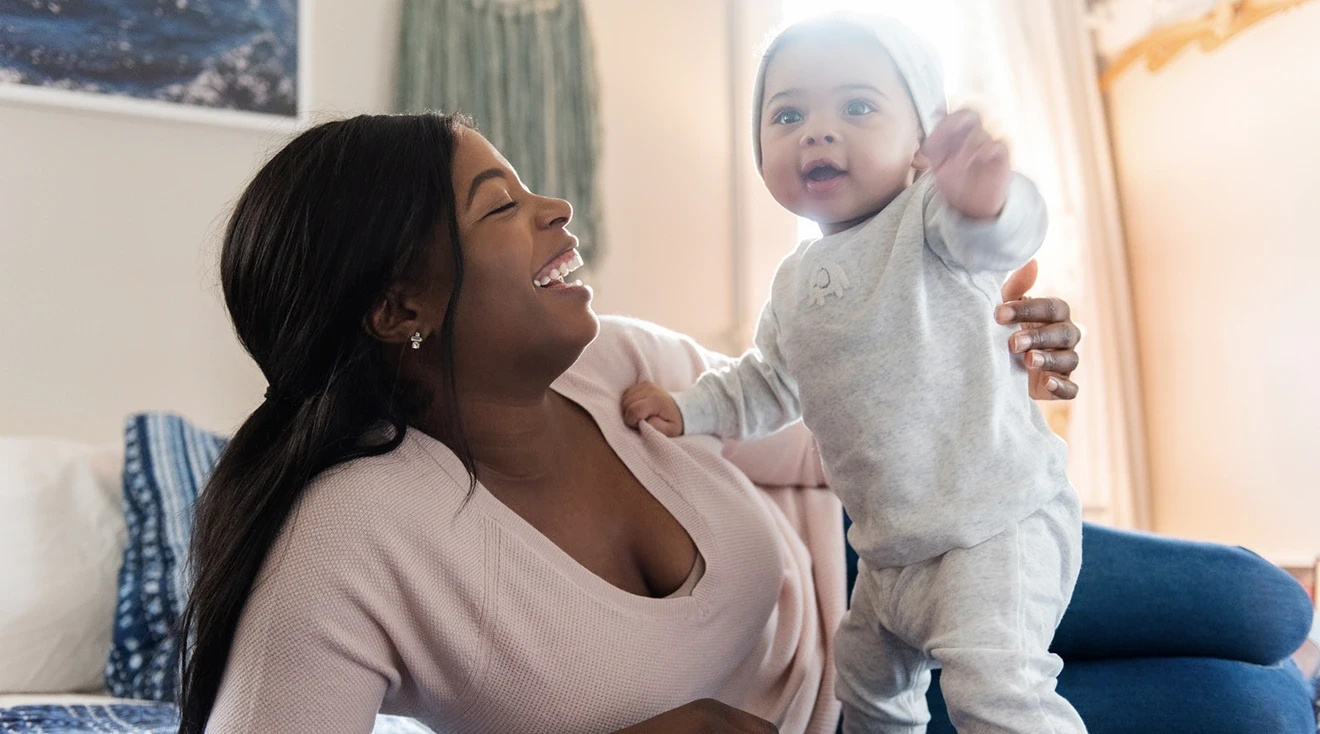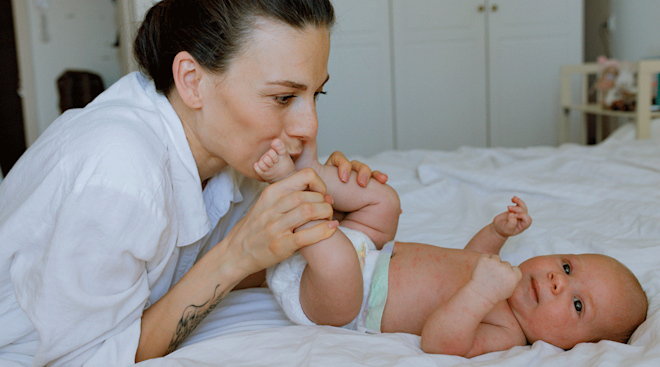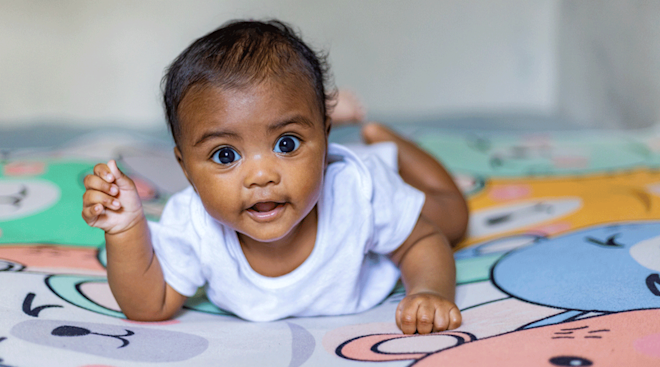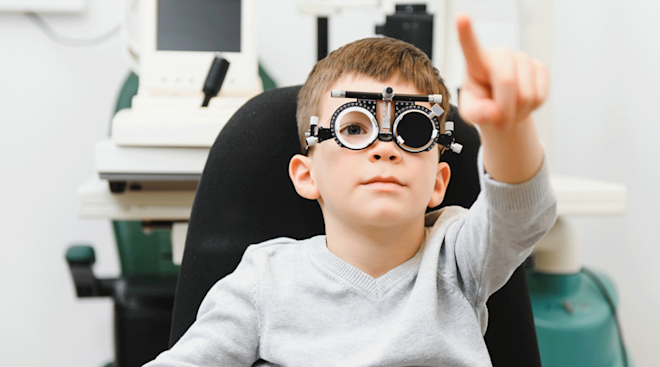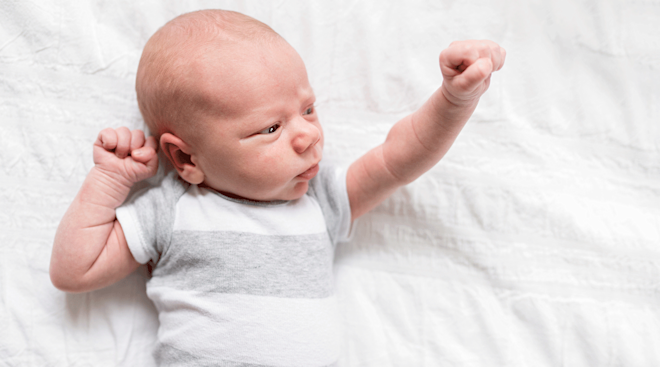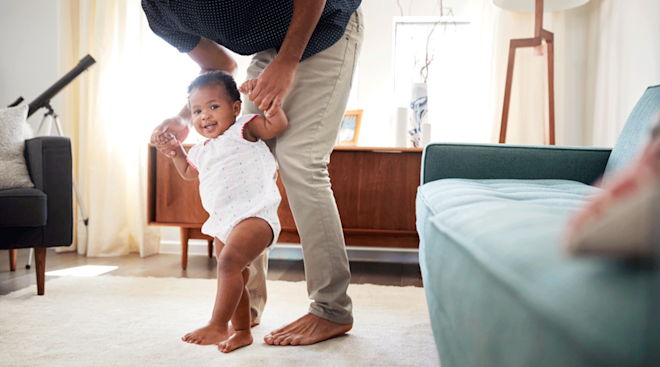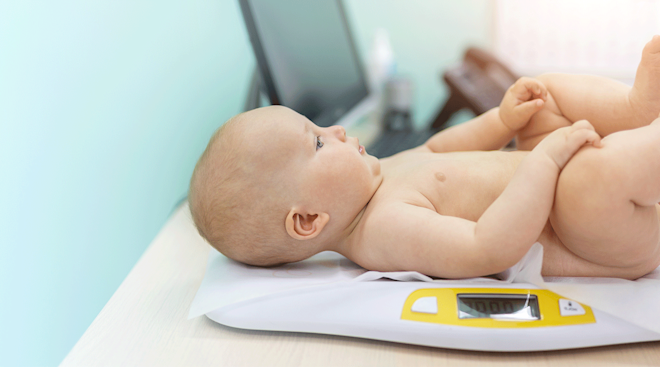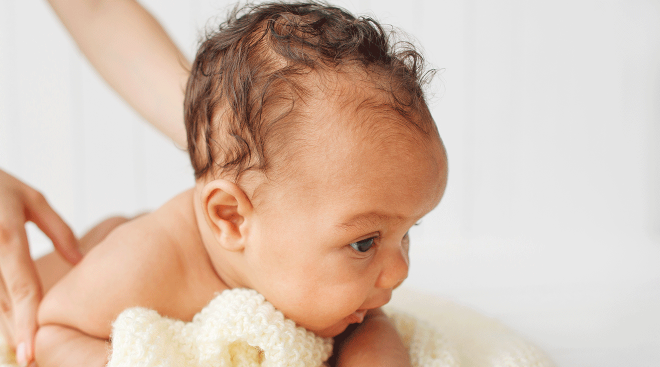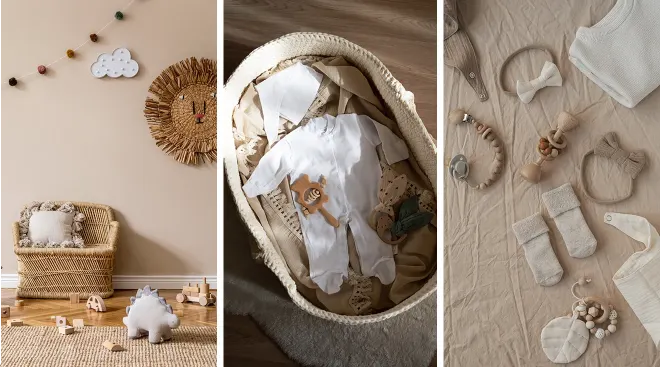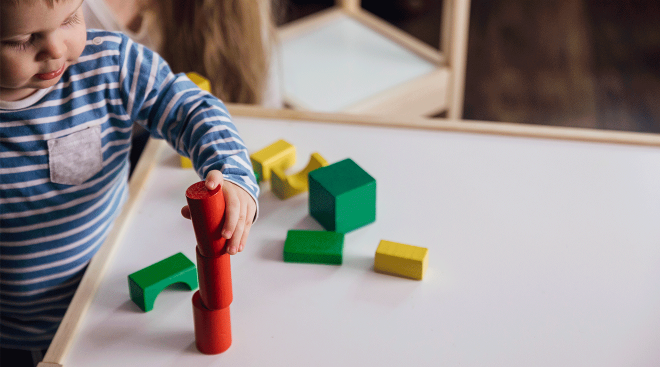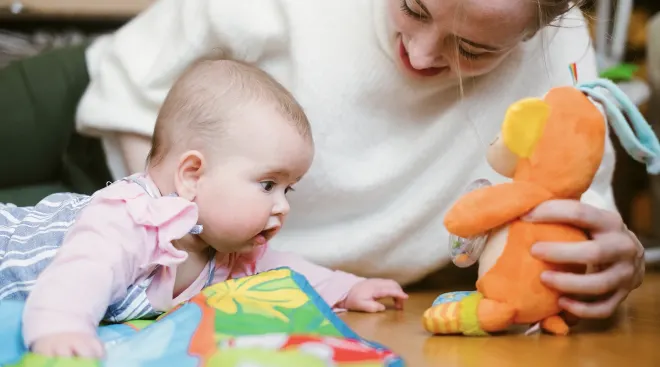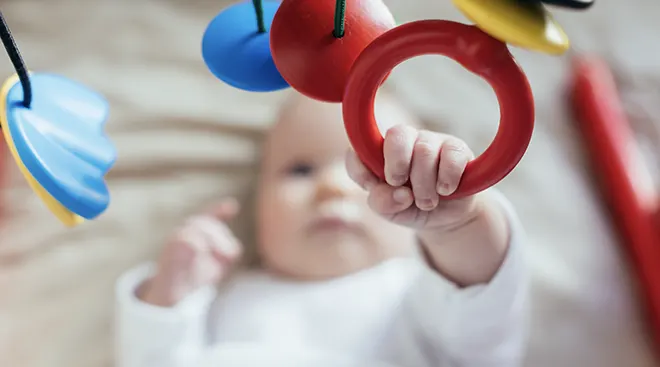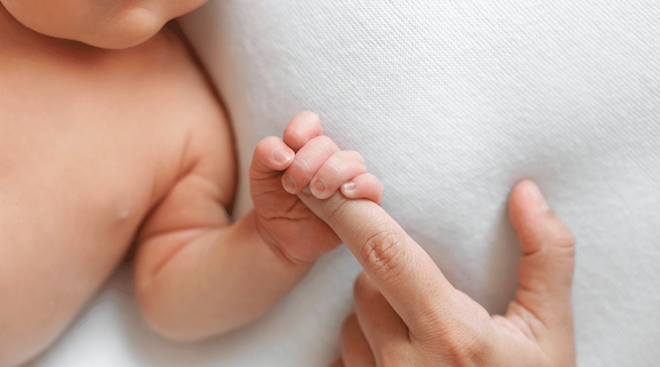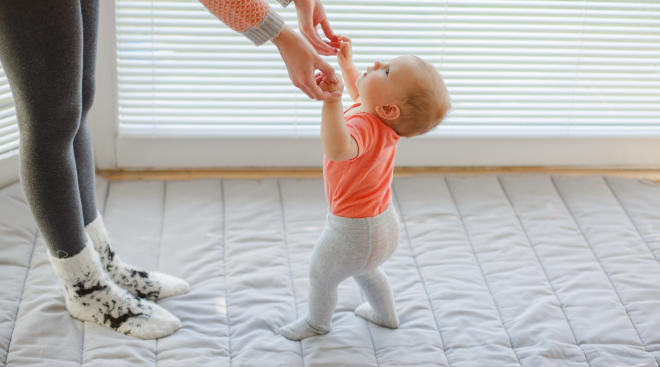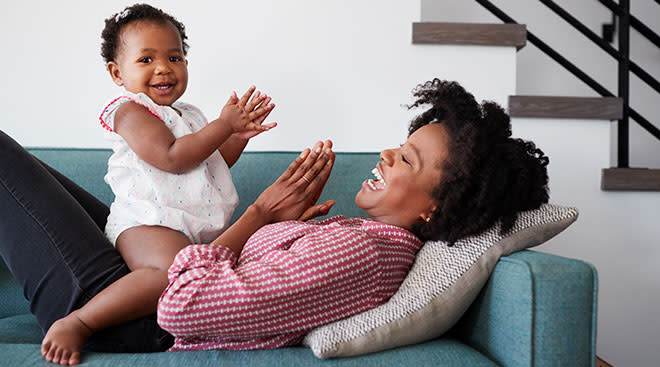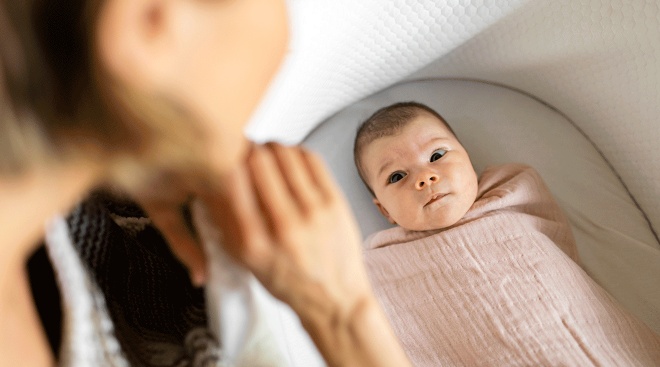When Can You Expect Baby to Stand?
As baby nears the end of their first year, you’re probably eager to see them take their very first steps. But before they can walk, babies need to learn to stand. For most infants, developing the necessary muscle strength and confidence to remain stable on their feet involves a lot of practice—and a few stumbles.
So when do babies stand? For most, it’ll happen before they hit the one-year mark. They’ll probably pull up to stand with support before being able to balance upright independently. Of course, all babies are different, and this timeline is anything but definitive. That said, there are some ways you can help encourage baby’s development (and boost their confidence along the way). Read on to get a better idea of when you might see baby standing, how to foster this important milestone and when to seek outside help.
Most babies will pull up to stand between 9 and 12 months of age, says Mary Carol Burkhardt, MD, a pediatrician at Cincinnati Children’s Hospital. That said, there’s no set deadline for any milestone; rather, there’s a range of what’s normal. Your baby may stand a bit earlier or a bit later.
Before standing, babies go through a progression of milestones, explains Burkhardt. First, they begin to hold their head up without support between 2 and 4 months (they’ll gain full head and neck control around the six-month mark). Around 4 months, they may also be able to support some weight on their legs when you hold them under their armpits with their feet on a stable surface. Around this time, many babies will also start to roll over. Some may be able to sit on their own in a tripod position, with their bottoms on the ground and their hands supporting their weight in the front.
At around 9 months, most babies develop the core and arm strength to push up from their bellies and sit independently—and it’s at this point that many babies also begin to pull to stand, crawl and even walk, says Burkhardt.
If baby was born prematurely, your doctor will likely offer you a different timeline of this milestone. “We give premature babies extra time,” adds Burkhardt.
Standing independently means that baby balances on their feet without holding onto anything. Most babies reach this milestone between 9 to 15 months—or typically right after learning to pull to stand and just before starting to walk.
While you might think that standing is all about leg strength, Burkhardt says it actually likely requires more core strength. To pull up to stand, babies need to change their position from crawling or sitting, which recruits the whole upper body. Babies also need to develop coordination and figure out where to put their arms and legs to avoid tipping over.
You’ll know baby is ready to stand when they prop themselves up on their knees and reach for things above their eye level, explains Sapna Singh, MD, a pediatrician at Texas Children’s Hospital. They may also start grabbing at objects that are at a slightly taller height.
Want to encourage baby to stand? “The most important thing you can do is be patient and active in their development,” says Singh. Here are some proactive steps you can try:
- Prioritize tummy time. Experts universally recommend supervised tummy time from birth, since it helps baby develop the core strength required to sit, stand and walk. Tummy time is simple: Place baby on their belly when they’re awake, with a toy in their line of vision, while you supervise.
- Allow baby to explore. Instead of keeping baby confined to a baby seat or stroller, offer plenty of opportunities to practice pulling up on round-cornered furniture that’s weighted or attached to the floor or wall—think a low coffee table or couch. (Stay away from the stairs. They’re just too dangerous.) Floor play is also important. “That’s the best playground for them. They’re just able to explore in a more natural way,” says Burkhardt.
- Grab their attention. Curiosity plays a large role in baby’s development, explains Burkhardt. Use that to your advantage. Place a favorite toy or a mirror on a stable object just out of baby’s reach and encourage them to grab for it.
- Skip the equipment. You don’t need fancy gear or accessories—including walking shoes—to help baby stand. Bare feet are typically best, Burkhardt says.
- Give baby a hand. If baby shows interest in pulling up, Singh suggests offering two fingers on each hand to help them gently pull up to a standing position.
- Boost their confidence. Once baby has mastered pulling up to stand and seems relatively stable, Singh suggests encouraging them to stand independently by handing them a small toy. “It makes them feel like they’re still holding something for support,” she says.
- Be prepared for spills. Babies will fall, which can be surprising and possibly upsetting for both of you. Try not to show too much alarm, though, which can escalate baby’s reaction.
- Share an example. Bring baby to activities with kids around the same age so they can watch them having a good time standing and walking. “It really does kind of push and challenge them to try to do the same thing,” says Singh.
Is it bad to hold baby in a standing position?
It’s perfectly fine to hold baby in a standing position, and it won’t cause bowleggedness. Just use common sense, and don’t force your child into any position that seems uncomfortable. If they seem tired, let them take a break, advises Burkhardt.
Whatever you do, avoid infant walkers. “They’re known to delay walking, and are actually very dangerous,” says Singh, who adds that babies have tumbled down stairs, drowned or sustained skull fractures because a walker tipped over. Stationary standing activity centers are a good alternative for occasional use if you need a safe space for baby while you’re occupied. Just keep in mind that while they may help build baby’s leg strength, your little one will probably benefit even more from having the freedom to explore on their own.
All baby milestones fall within a range, Burkardt reiterates, and it’s normal if a baby is advanced in language, for example, but slow to stand. That’s why it’s important to attend baby’s regular wellness checkups. Their doctor will evaluate milestone progress at each visit and flag any issues that require further investigation.
So what should you do if baby isn’t standing in this anticipated window of time? For starters, try not to stress. A number of factors can impact baby’s standing progress. “Some kids are happy to just play with the toy right in front of them,” says Burkhardt. Others have less muscle tone or more baby fat for genetic reasons, which makes standing more challenging.
Frequently, babies who are slightly delayed in walking haven’t had as much floor time—particularly tummy time—when they were younger, because they spent a lot of time in a carrier, rocker or stroller. Don’t blame yourself for this. “Babies progress at their own rate. It doesn’t mean the parent stunted their child’s growth,” says Burkhardt. With early detection and intervention, babies can get caught up.
In many cases, a lack of strength or flexibility is the cause, but this is also easy to address with a little help. “If it’s a benign case of low [muscle] tone or a developmental delays, it may require just a few sessions of physical therapy until the parents can take over,” says Patricia Tan, MD, a pediatric podiatrist and rehabilitation medicine specialist at Hassenfeld Children’s Hospital at NYU Langone Health.
That said, if you have developmental or milestone concerns, bring them up with your child’s doctor sooner than later. “If something that should be normal begins to seem uncomfortable, then that needs to be addressed,” notes Singh. Either way, if baby isn’t standing independently by 16 months, she recommends flagging this with your pediatrician.
Your doctor will monitor for relatively rare neuromuscular conditions that affect standing, including cerebral palsy, muscular dystrophy and underlying genetic issues. Noteworthy symptoms to mention to your doctor include:
- A large asymmetry, where one leg or arm drags or doesn’t move like the other
- Muscle floppiness or stiffness
- Regression—or baby suddenly loses skills they had previously acquired
Tan suggests bringing a video of baby engaging in any concerning behaviors at home, since they may be less comfortable at the doctor’s office and won’t replicate them there. If necessary, your doctor may refer you to a neurologist, orthopedic doctor or other specialist who can diagnose an underlying condition and create a treatment plan.
After standing, babies move on to cruising (holding onto furniture as they take steps). Then it’s anyone’s best guess when baby will start walking independently. “There are some kids who stand, and the next day take off walking,” says Burkhardt. Other babies may take another month or two to start walking—and some children may not take their first independent steps until 16 to 18 months, adds Singh.
When it comes to baby standing (and every other exciting milestone), there’s a wide range of what’s considered normal. Your little one will get there when they’re ready. In the meantime, let them explore, play and build up their strength.
About the experts:
Mary Carol Burkhardt, MD, MHA, is a primary care pediatrician at Cincinnati Children’s Hospital and an assistant professor at the UC Department of Pediatrics. She earned her medical degree from the University of Cincinnati College of Medicine.
Sapna Singh, MD, is a pediatrician at Texas Children’s Hospital. She earned her medical degree from Texas A&M University Health Science Center.
Patricia Tan, MD, is a pediatric podiatrist and rehabilitation medicine specialist at Hassenfeld Children’s Hospital at NYU Langone Health.
Please note: The Bump and the materials and information it contains are not intended to, and do not constitute, medical or other health advice or diagnosis and should not be used as such. You should always consult with a qualified physician or health professional about your specific circumstances.
Plus, more from The Bump:
Navigate forward to interact with the calendar and select a date. Press the question mark key to get the keyboard shortcuts for changing dates.
































